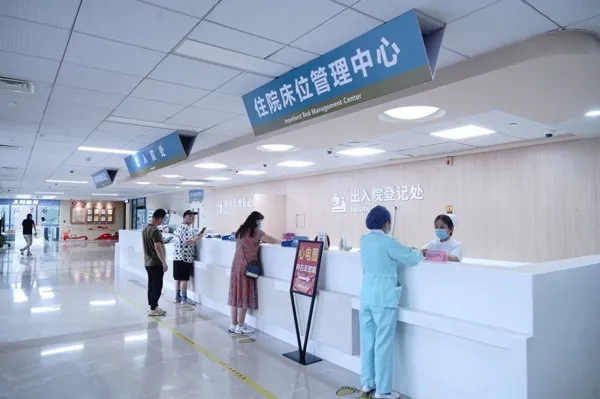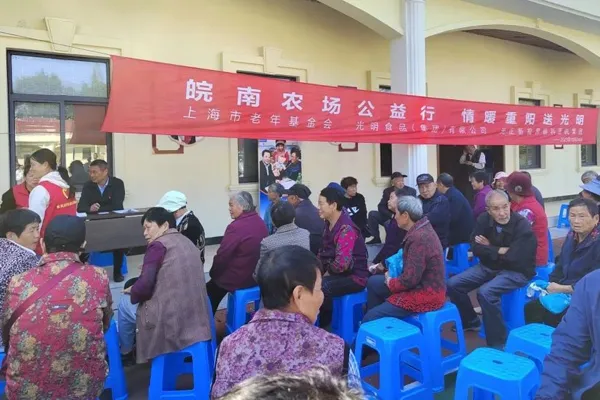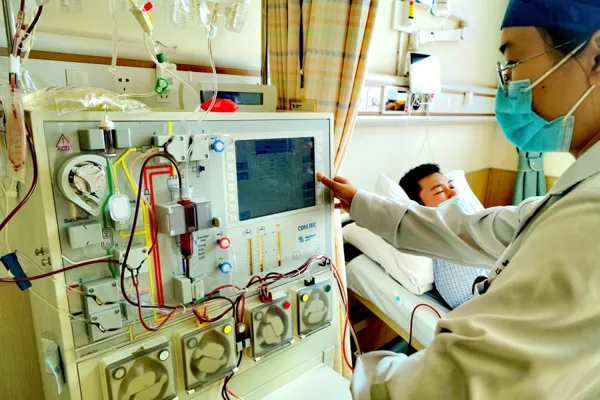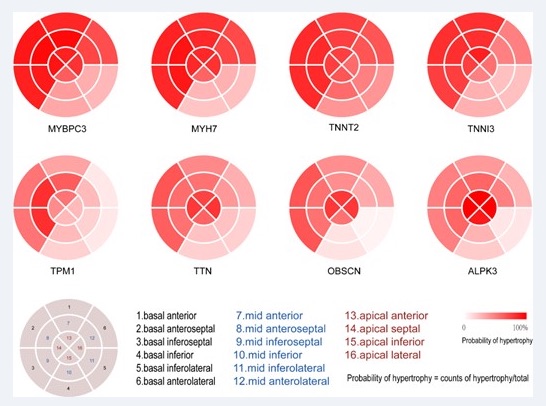Let interdisciplinary hospitalization no longer have to wait long, and "beds are hard to find" and "beds are vacant" become a problem? "One bed in the whole hospital" in the seventh hospital
"I was prepared to wait for several days for a hospital bed. Unexpectedly, the medical staff of the Seventh Hospital quickly helped me 'move to a new home.'" Ms. Bian, who suffered a fracture, was just discharged from the hospital a few days ago. As the seventh people's hospital of Shanghai, " The first beneficiary after the establishment of the "Inpatient Bed Management Center", she has many feelings, "Although she does not live in the orthopedic ward, the treatment is very smooth, and the most important thing is that she does not have to wait, which is great!"
Ms. Bian's "urgency" is the same as the "urgency" of patients for a long time: waiting for surgery, the beds in the department are full. The expedient solution of many medical institutions is to allow patients to "extra beds" in the corridor. However, narrow aisles present many inconveniences and safety hazards, which also greatly affect the medical experience. What’s even more worrying is that sometimes with the high incidence of seasonal specialist diseases, you have to wait even for an extra bed. At the same time, another embarrassing phenomenon has also attracted attention: the inpatient beds in some wards are deserted and idle, and the uneven busyness has led to a low effective bed utilization rate.
Beds are hard to find and beds are vacant. How to break the barrier of bed allocation among different departments? Since the launch of the second batch of thematic education, Shanghai No. 7 People's Hospital has conducted in-depth investigations and studies based on this phenomenon, innovatively implemented the "one bed for the whole hospital" measure, and made new strides in solving the "pain points, congestion points, and difficulties" of medical treatment. step. Ms. Bian, who originally needed to be admitted to the orthopedics department, was admitted to the urology ward as soon as possible through the hospital's deployment and management, and completed the treatment without any hindrance.
In response to pain points, doctors "run errands" and nurses are "multi-talented"
Ms. Bian suffered from Guerinian fracture, which happened to have an acute attack recently. She rushed to the emergency department of the Seventh Hospital for medical treatment. The doctor diagnosed that she needed surgery. However, there are no beds in the orthopedic ward. In the past, when encountering such situations, she could only "extra beds" in the corridor. Before the anxious Ms. Bian had time to prepare bedding items to improve comfort, the emergency doctor gave her a "reassurance pill." After contacting the inpatient bed management center by phone as soon as possible, the center staff checked the bed status in the hospital through the information system and quickly arranged the patient to be hospitalized in the urology ward.
Although she lives in the urology ward, the doctor in charge of Ms. Bian's bed is still from the orthopedics department. "They come to the urology department every day to check my ward, and if they have any questions, they can contact me through the ward nurse in time." The doctors "run errands" and the nurses become "all-rounders". Urology nurses are the ones who carry out medical orders and nursing operations for Ms. Bian. Jin Yongmei, director of the Nursing Department, said that in response to "interdisciplinary nursing", three years ago, the Nursing Department of the Seventh Hospital carried out ward rotation training to make each nurse familiar with the nursing and specialist skills of each ward, thus ensuring that no matter where the patient comes from, All departments can enjoy the same professional and high-quality nursing services, which laid the foundation for this pilot.
During the theme education, the leaders in charge of the Seventh Hospital were in charge, the Nursing Department took the lead in implementation, the Medical Department was responsible for coordinating difficult issues, and the Information Department provided information system support. By sorting out the survey results, the beds in the entire hospital were included in the center, and the entire hospital shared "one bed." ". During the one-month trial period of the inpatient bed management model, the hospital admitted a total of more than 2,700 patients, of which more than 100 patients were allocated across departments, bringing the bed utilization rate to full capacity. The person in charge of the hospital said that by opening up the bed boundaries between departments, the awareness of "the whole hospital is one game" has been further strengthened, and the "patient-oriented" concept of serving the people has been strengthened. By shortening the waiting time for admission, we will continue to improve patient satisfaction and truly realize "wherever the patient goes, the service follows."
In response to the issue of "whether patients can be discharged smoothly after being admitted to multiple departments", the Seventh Hospital also maximized the linkage and inventory of hospital data information during the theme education period, and finally realized "one-stop" services such as bedside discharge settlement, that is, patients do not need to leave the ward. Able to handle discharge procedures. When planning and arranging beds, the principles of adjacent departments, similar majors, and convenient management of patients are followed, so that both doctors and patients can get a better experience.
"Ask about needs, solve problems, and look for ideas", take patients' needs as the guide, and test the research results with practice. Vice President Hu Dan said that as a regional medical center, the Seventh Hospital serves more than 800,000 residents in the northern part of Pudong New Area. Being in-depth and practical in thematic education is a concrete manifestation of the insistence on "people first, life first" in the field of health. "Through the theme education of continuous 'pulse check', in the next step, the hospital will continue to optimize and improve the 'one bed for the whole hospital' service, and further promote the 'pre-hospitalization' centralized service, allowing patients to complete examinations before admission, shortening the hospital admission Post-operative waiting time.”





